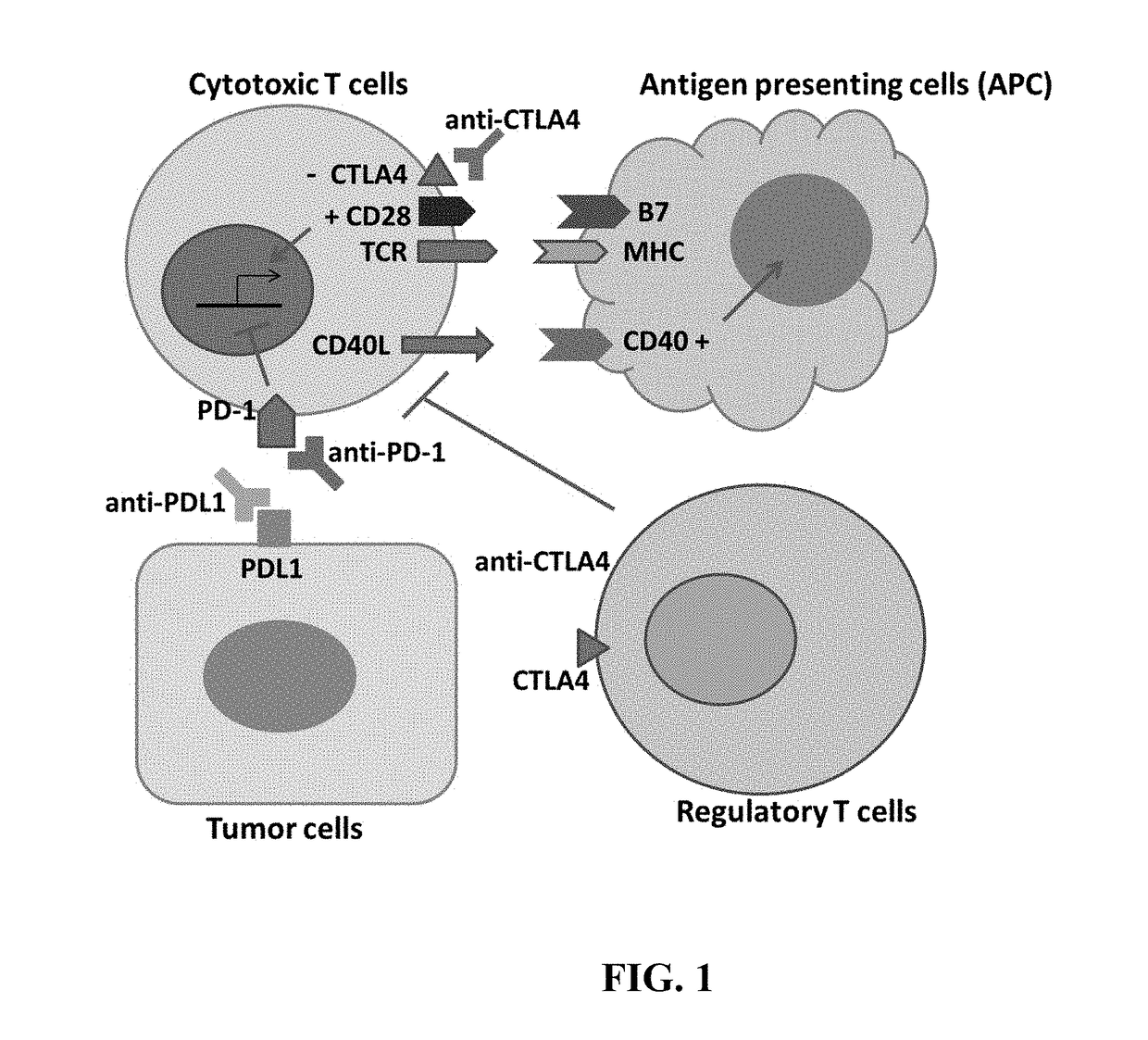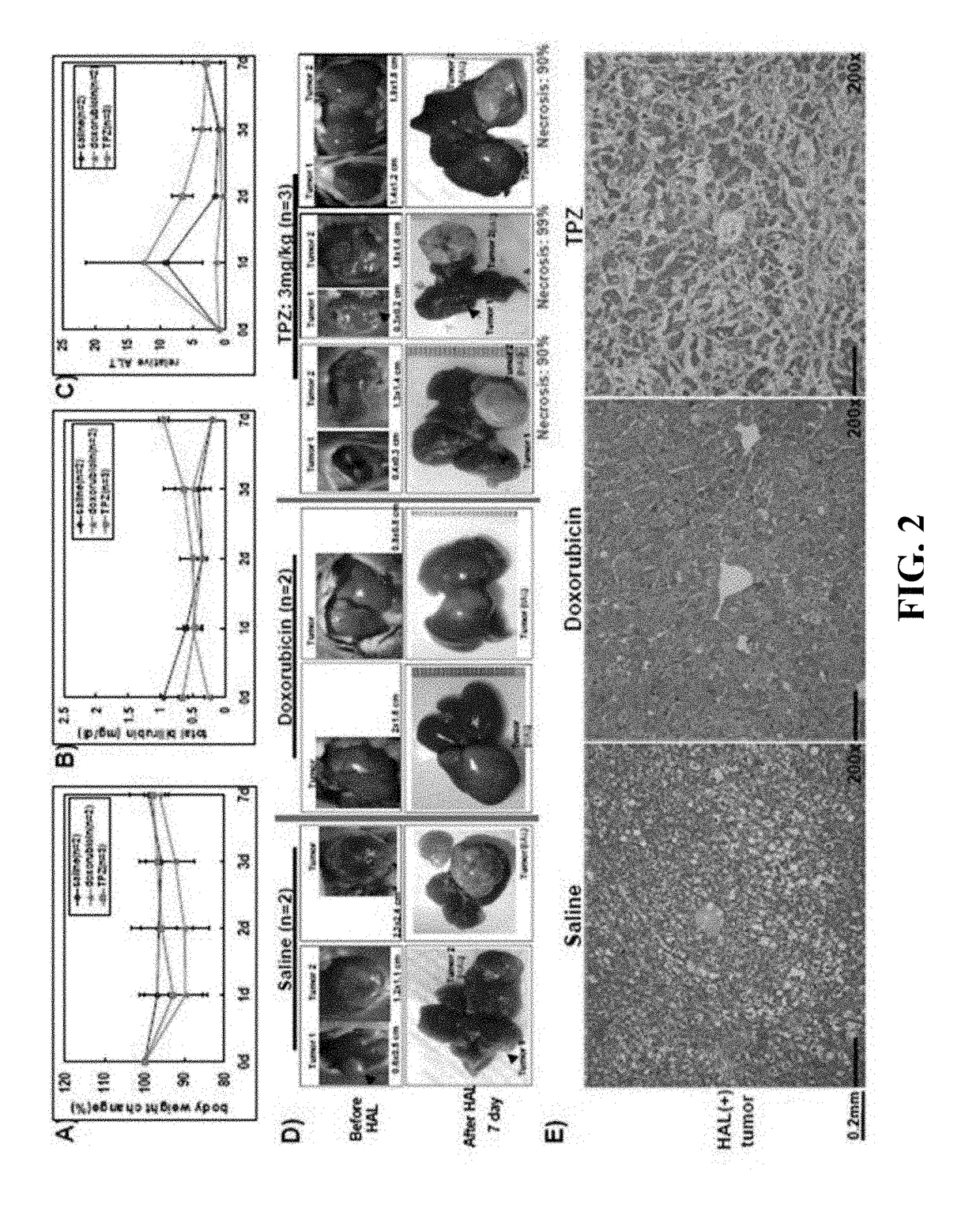Compositions and methods for immune-mediated cancer therapy
a cancer therapy and immune-mediated technology, applied in the field of compositions and methods for immune-mediated cancer therapy, can solve the problems of tipped immune system balance toward autoimmune disorders, increased risk of further enhancement of general immunity, and large improvement room, so as to enhance an immune response and enhance an immune response
- Summary
- Abstract
- Description
- Claims
- Application Information
AI Technical Summary
Benefits of technology
Problems solved by technology
Method used
Image
Examples
example 1
on of Tirapazamine and Hepatic Artery Ligation in a Hepatocellular Carcinoma Model
[0062]Materials and methods: All the HBx transgenic mice were bred and followed-up in a specific pathogen-free facility; the tails of individual mice were subsequently collected for the genotyping process on weaning at 3 weeks of age. Hepatocellular carcinoma (HCC) developed spontaneously in >95% of the male HBx transgenic mice at the age of 17-18 months. Transgenic mice having tumors 0.5-2 cm in diameter were used for the study.
[0063]Treatment of tumor-bearing HBx mice with tirapazamine and hepatic artery ligation: The HBx transgenic mice were subjected to the left hepatic artery ligation for 40 min and the silk ligation was subsequently untied. During the studies on the drug effects, 0.9% saline, doxorubicin (10 mg / kg), or TPZ (3 mg / kg) were injected into the tail vein of each mouse for 7 min before the hepatic artery ligation. After completion of the injection, a midline laparotomy was performed to ...
example 2
on of Tirapazamine and Combretastatin A4 and DMXAA in a Lung Cancer Model
[0065]Materials and methods: Human lung cancer NCI-H460 cells were purchased from ATCC and used in this study. Cells were sub-cultured within 5 passages before inoculated into the mice. After the animals' acclimation period, approximately 1.5×106 NCI-H460 cells in 200 μL of serum-free media / matrigel (50:50 v / v) were injected subcutaneously to each mouse under anesthesia with 3-4% isoflurane. BALB / c nude mice, male, about 4-5 weeks and 18-20 g in weight were purchased from Shanghai SLAC Laboratory Animal Co. Ltd., China and housed in vivarium in 3-5 mice / cage by treatment group. Mice had free access to food (irradiated, Shanghai SLAC Laboratory Animal Co. Ltd. China) and water (municipal tap water filtered by Mol Ultrapure Water System).
[0066]Mice from each group were euthanized with CO2 asphyxiation followed by cervical dislocation at day 18 after the first dose, tumors were collected, weighed, and their pictur...
example 3
of Tumor Necrosis and Converting the Tumor into a Cancer Vaccine In Vivo
[0067]In order to solve the problem of tumor heterogeneity and genomic instability, the ideal cancer vaccine is the self-tumor of each patient. However, the tumor itself is typically not very immunogenic, and the degree of anti-tumor immunity is generally not sufficient even in the presence of immune checkpoint inhibitors alone. An immune response may be enhanced by inducing tumor necrosis, which is associated with strong inflammatory responses that lead to a presentation of tumor-associated antigens to T cells and increase the population of tumor-specific T cells. One approach of induction of tumor necrosis is applicable in cancers within liver, for example, which is an organ with dual blood supplies from portal vein and hepatic artery that allow embolization of the tumor-supplying hepatic artery without significant damages to normal liver. The strategy to induce tumor necrosis is a combination of tirapazamine,...
PUM
| Property | Measurement | Unit |
|---|---|---|
| diameter | aaaaa | aaaaa |
| diameter | aaaaa | aaaaa |
| thickness | aaaaa | aaaaa |
Abstract
Description
Claims
Application Information
 Login to View More
Login to View More - R&D
- Intellectual Property
- Life Sciences
- Materials
- Tech Scout
- Unparalleled Data Quality
- Higher Quality Content
- 60% Fewer Hallucinations
Browse by: Latest US Patents, China's latest patents, Technical Efficacy Thesaurus, Application Domain, Technology Topic, Popular Technical Reports.
© 2025 PatSnap. All rights reserved.Legal|Privacy policy|Modern Slavery Act Transparency Statement|Sitemap|About US| Contact US: help@patsnap.com



